Question: How can I find a non-crushed ice cushion cut diamond? What is the difference between crushed ice cushion cut diamonds and non-crushed ice cushion cut diamonds and what are the ideal parameters for cushion cuts?
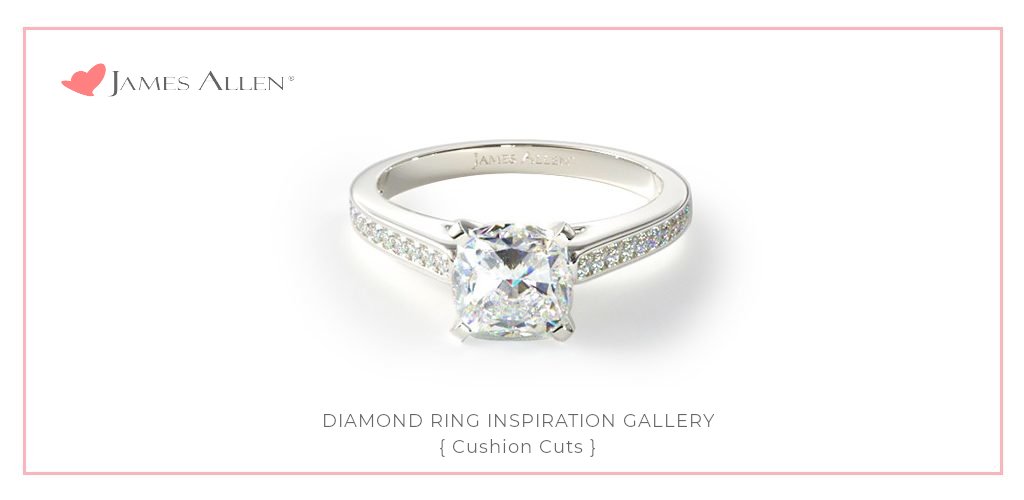
Answer: I’ll explain a little about cushion cut diamonds and go into what makes a diamond have the crushed ice look.
Cushion cut diamonds are essentially a combination of princess and round brilliant. They combine the softness of round brilliants with the square shape of princess cuts. It’s kind of the best of both worlds and are often more attractively priced than many other shapes.
As the shape of the finished diamond is not too dissimilar to how natural diamond is formed in the rough shape there can be minimal loss of material. Not as much of the rough needs to be cut away to reveal the final form. This can translate into a lower price per carat than round brilliants.
What Does Crushed Ice Mean?
The term crushed ice has in recent years been applied to a certain look that can be found in a number of fancy cut diamond shapes including cushion cut diamonds, radiant cut diamonds and oval cut diamonds.
I will explain the effect as it pertains to cushion cut diamonds.
“Crushed ice” cushion cut diamonds are diamonds that have a greater number but smaller points of light below the table. They do tend to lack contrast in a face up view. The facets showing through the table have reduced definition because the way light is refracted causes additional “virtual” facets. This results in more of a shimmer through the table rather than broad flashes of light.
The public preference in years past has tended more toward the crushed ice look as this one was usually cheaper, though sentiment seems to be shifting now toward the non-crushed ice look. It no doubt has to do with the increase in the availability of lab created diamonds.
The crushed ice look was often the chosen way to facet a cushion cut diamond because it retained more weight resulting in lower cost per carat. These savings could be passed on to the customer. As uncut lab diamonds do not come in the same shape as natural rough diamonds it is possible to fashion cushion cut diamonds into the various non-crushed ice versions without it costing as much. The loss of material is not as costly as with natural diamonds.
This means diamond cutters are free to facet lab created diamonds in ways that produce the non-crushed ice look while maintaining competitive pricing.
At the time of writing James Allen stocks only “non-crushed ice” lab created cushion cut diamonds with the exception of fancy color cushion cuts. The crushed ice look is better suited for fancy color cushion diamonds.
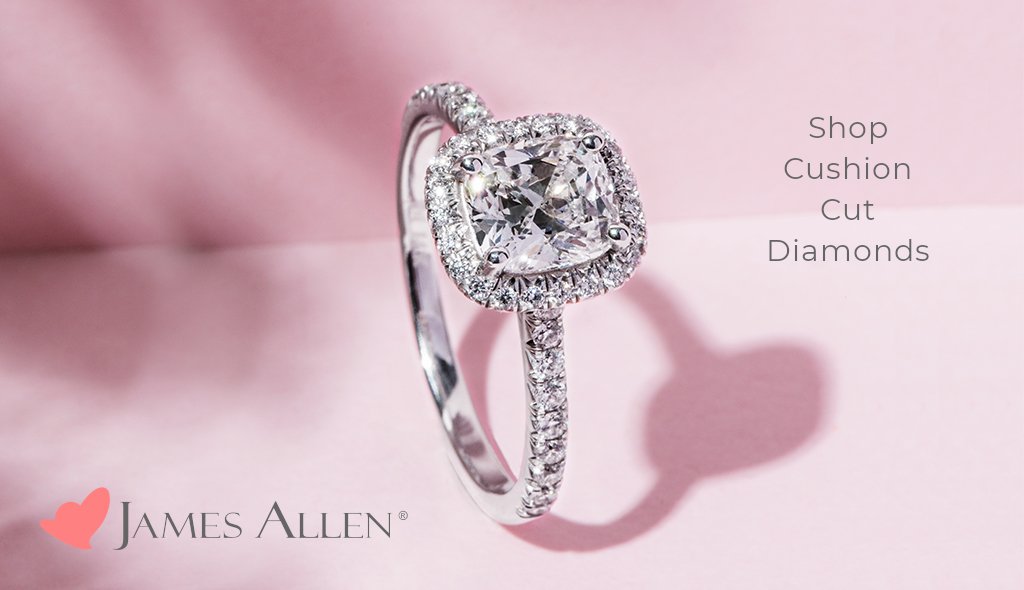
How To Differentiate Between Crushed Ice and Non Crushed Ice Cushion Cut Diamonds
There are several different cuts which fall under the cushion cut category. Not all result in a crushed ice look.
Diamond grading reports for cushion cuts will have various names on them including “Cushion Modified Brilliant”, the “Cushion Brilliant” and the “Cushion Modified Brilliant Hybrid”.
The key distinction in finding a non-crushed ice versions is to look at the pavilion faceting.
Reminder: the pavilion is the opposite side of the table
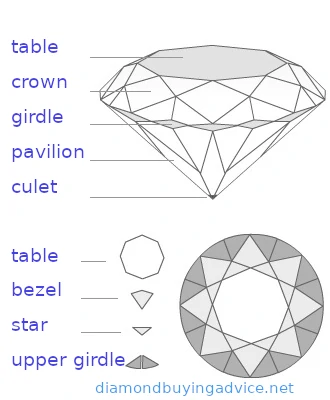
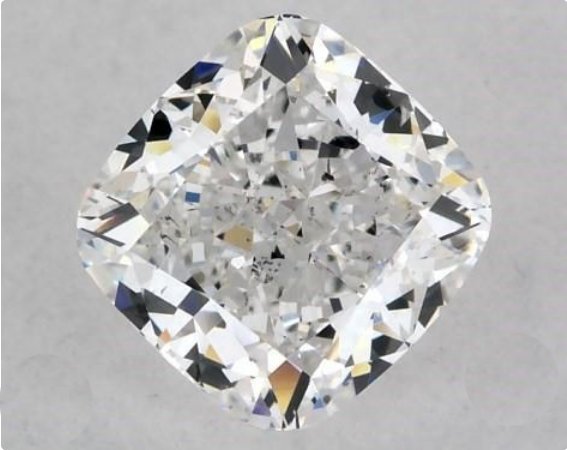
The cutting style that produces the crushed ice effect has 4 shortened pavilion mains with an extra row of facets between the pavilion mains and girdle. The change in angle in the pavilion is the main culprit here. The additional facets and the way they are arranged in this design result in the appearance of many virtual facets which all blend together below the table. When the mains are shortened like this the returning amount of light is reduced. Instead of returning the light directly back it first bounces around in the diamond. This results in short sparkles giving it what’s referred to as the “crushed ice” look.
It’s quite easy to spot a crushed ice diamond. Apart from the lack of definition in the facets viewed through the table there is also a change of angle below the girdle at the corners. The image below shows the change in angle between the culet and girdle.
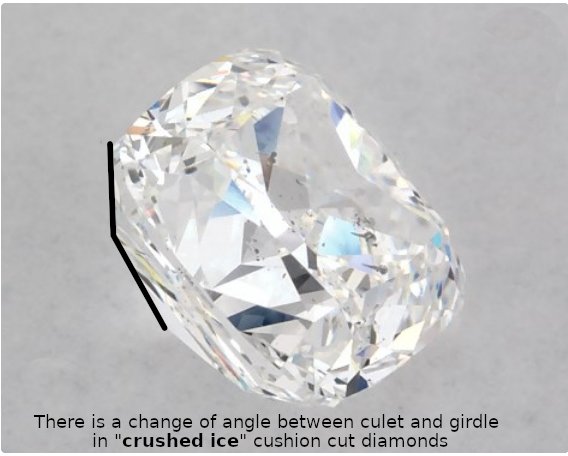
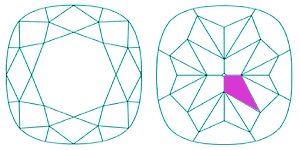
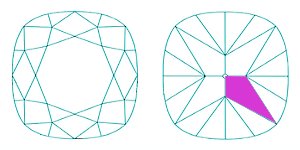
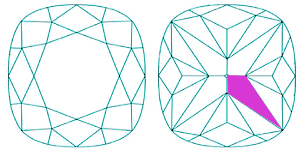
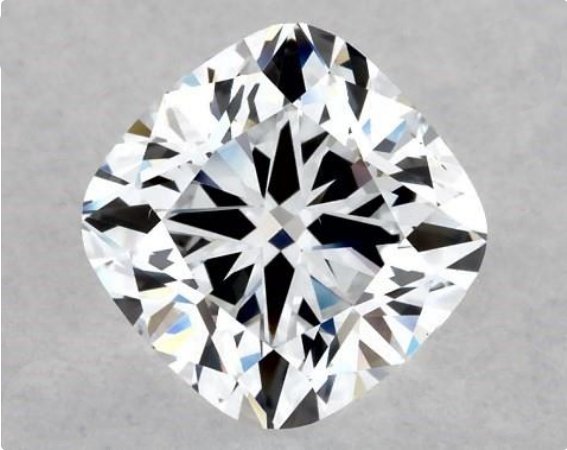
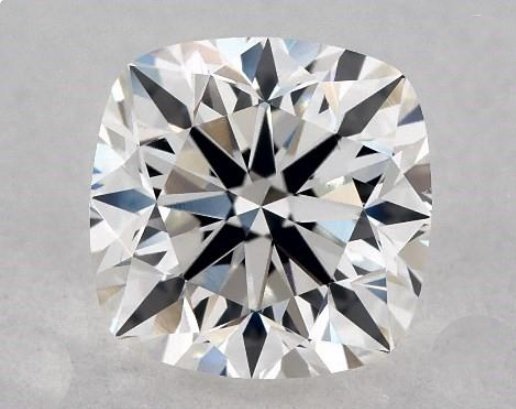
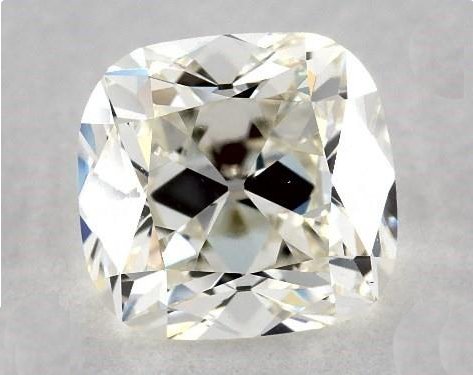
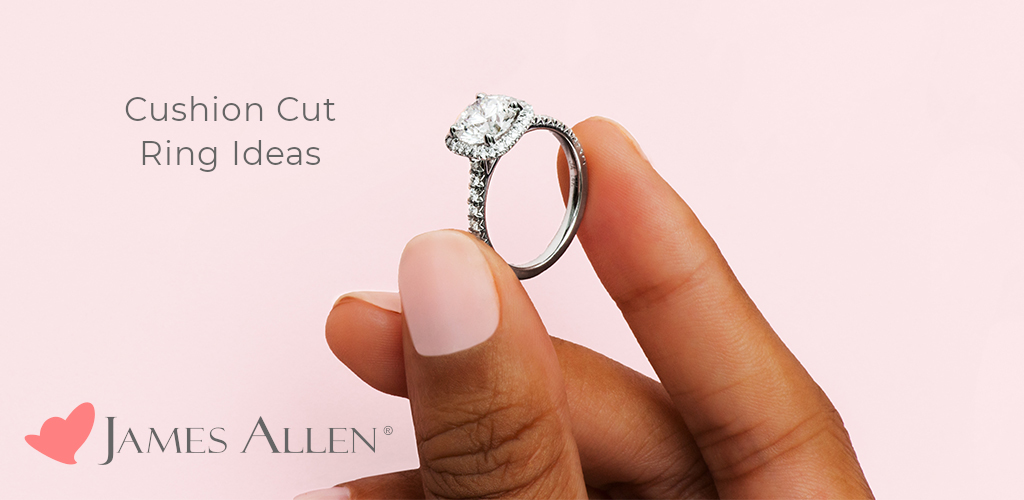
Non-crushed Ice Looks Bigger
Between crushed ice and non crushed ice cushion cut diamonds there is a definite difference in apparent size when comparing one of each where both are of identical weight.
A non-crushed ice diamond will easily look 5% larger, sometimes even up to 10% larger than a diamond of equal weight that has been cut as a “crushed-ice” version. This of course is to be expected. As shown above in the illustrations above the way of cutting a cushion cut diamond that hides weight with the extra lump below the girdle means there’s that much less of the diamond adding to the diamond’s spread. And the larger the weight the greater the difference in apparent size.
Optimal Proportions For Cushion Cut Diamonds
| Parameter | Optimum Range |
|---|---|
| Depth | 67-70% |
| Table | 58-63% |
| Length/Width Ratio | 1.00-1.04 |
Since cushion cut diamonds combine features from both round brilliant and princess cut diamonds it makes sense for the optimum parameters for cushion cut diamonds to lie between the optimum parameters for those two shapes. The ideal depth for cushions is therefore between the ideal depth for round brilliants and princess cuts. And the same goes for the ideal table proportion. However it is important to note that these alone do not make for an excellent cut. It only helps narrow down the options. Cushion cut diamonds with tables that are 64% or larger are better suited as fancy color diamonds as the light return is slightly reduced which helps color show up better.
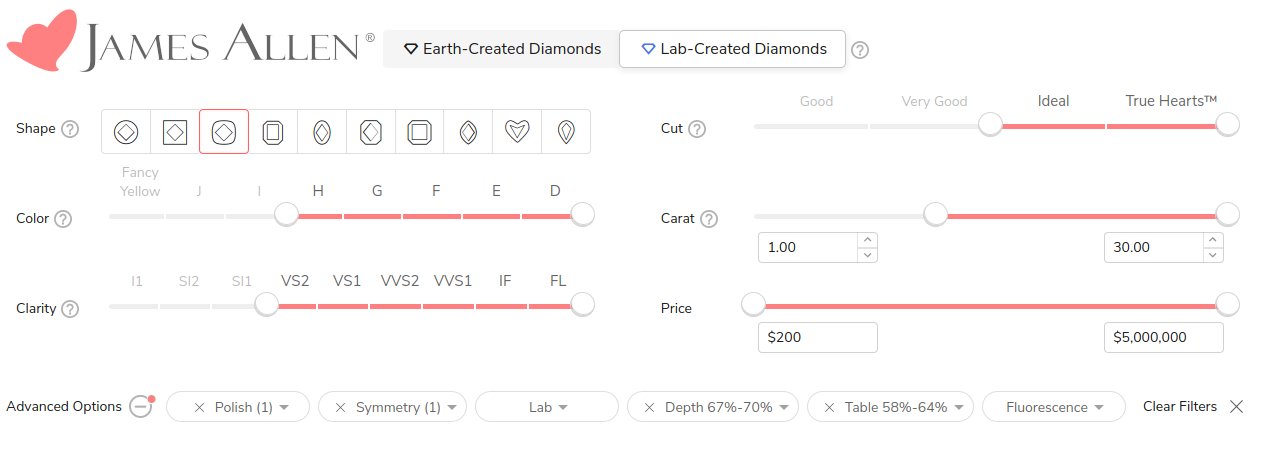
Use either of the two search buttons to automatically use the parameters shown in the image. You can then adjust according to the price range or size you are after. You can also expand the search to include Very Good Cut as that classification is not based on diamond grading reports but on James Allen’s discretion.
Send in your question
If you are looking to buy any type of diamond jewelry online you are welcome to send in any questions you may have.
As an affiliate of the some of the world’s finest jewelers I am motivated to find the right purchase that is perfect just for you. Every person has specific needs and every jeweler has specific areas in which they excel.

Thomas J Stevens GIA DG CSG

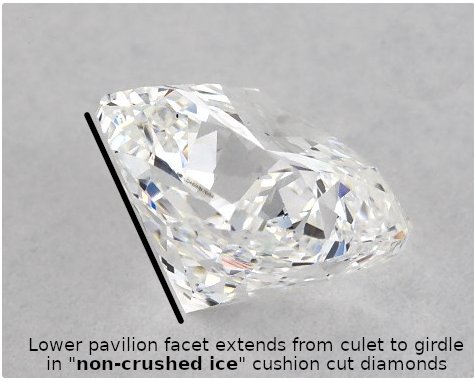
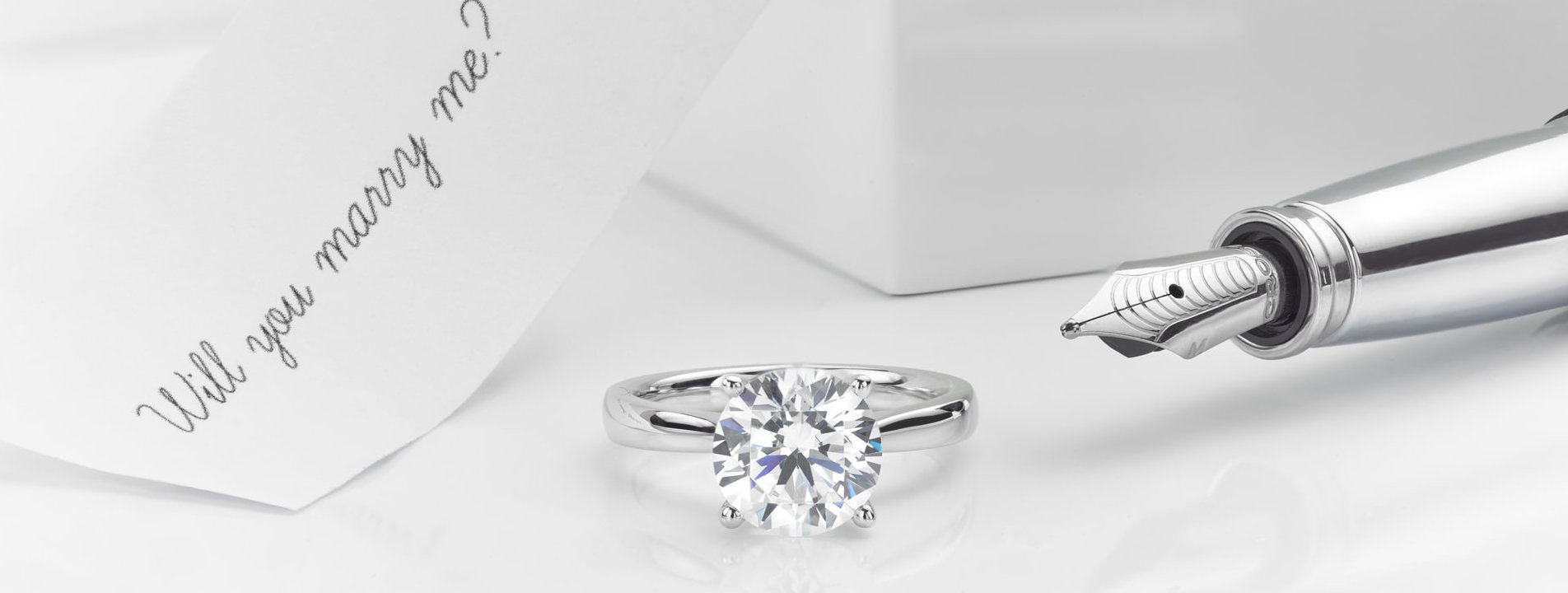
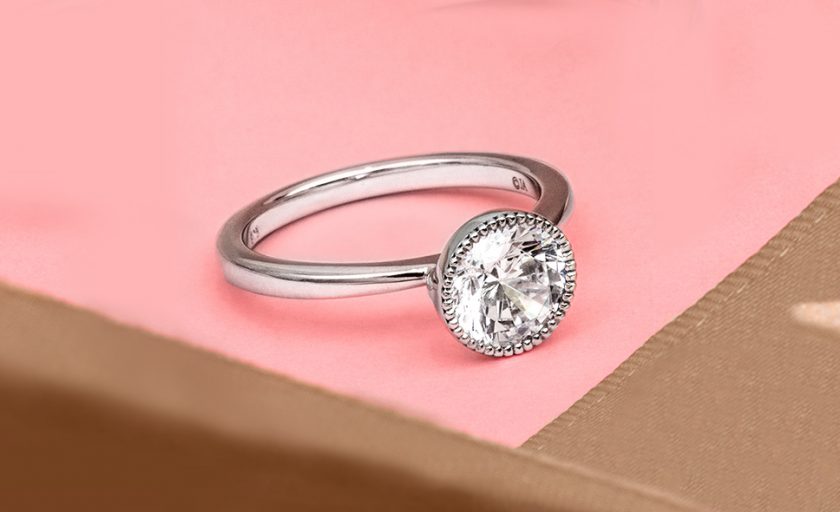
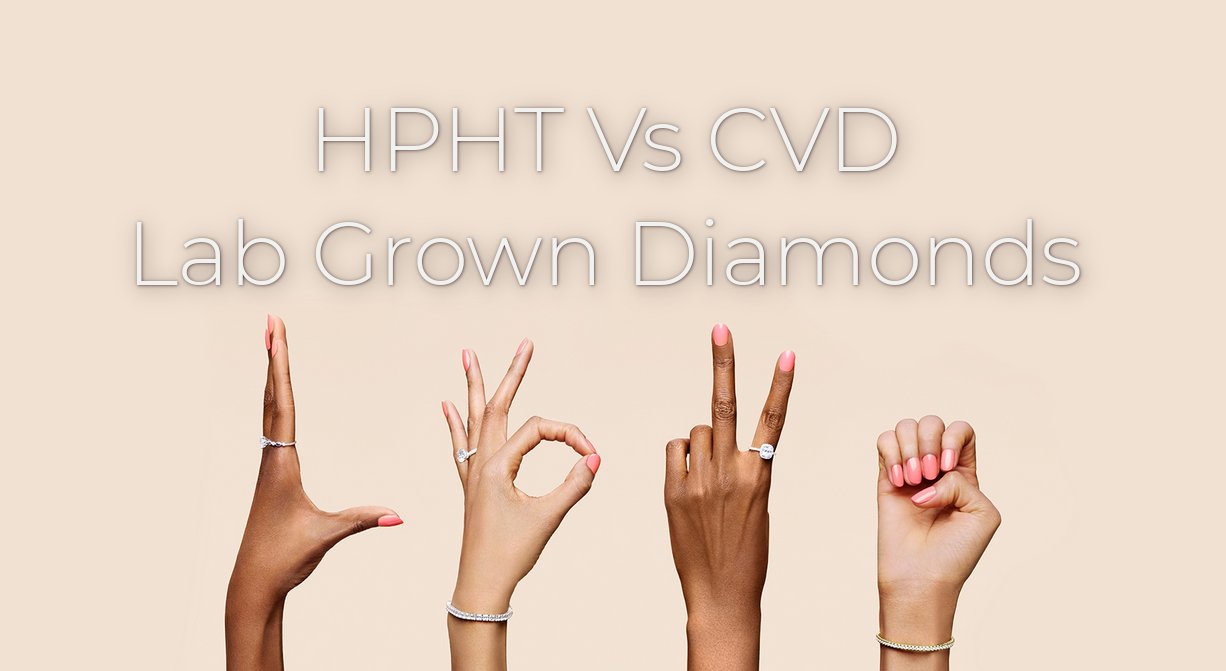
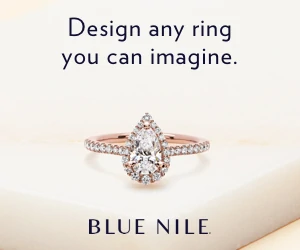
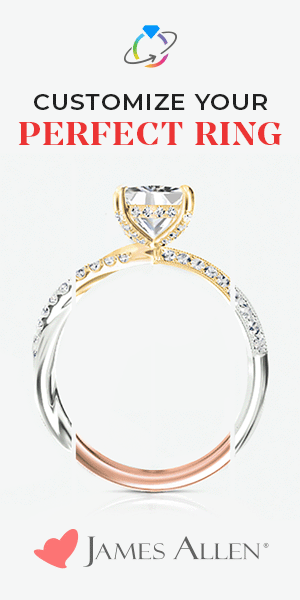
1 Response
[…] Here is an article I wrote to address the question of the crushed ice look in cushion cut diamonds: https://www.diamondbuyingadvice.net/help-choosing-non-crushed-ice-cushion-cut-diamond/ […]